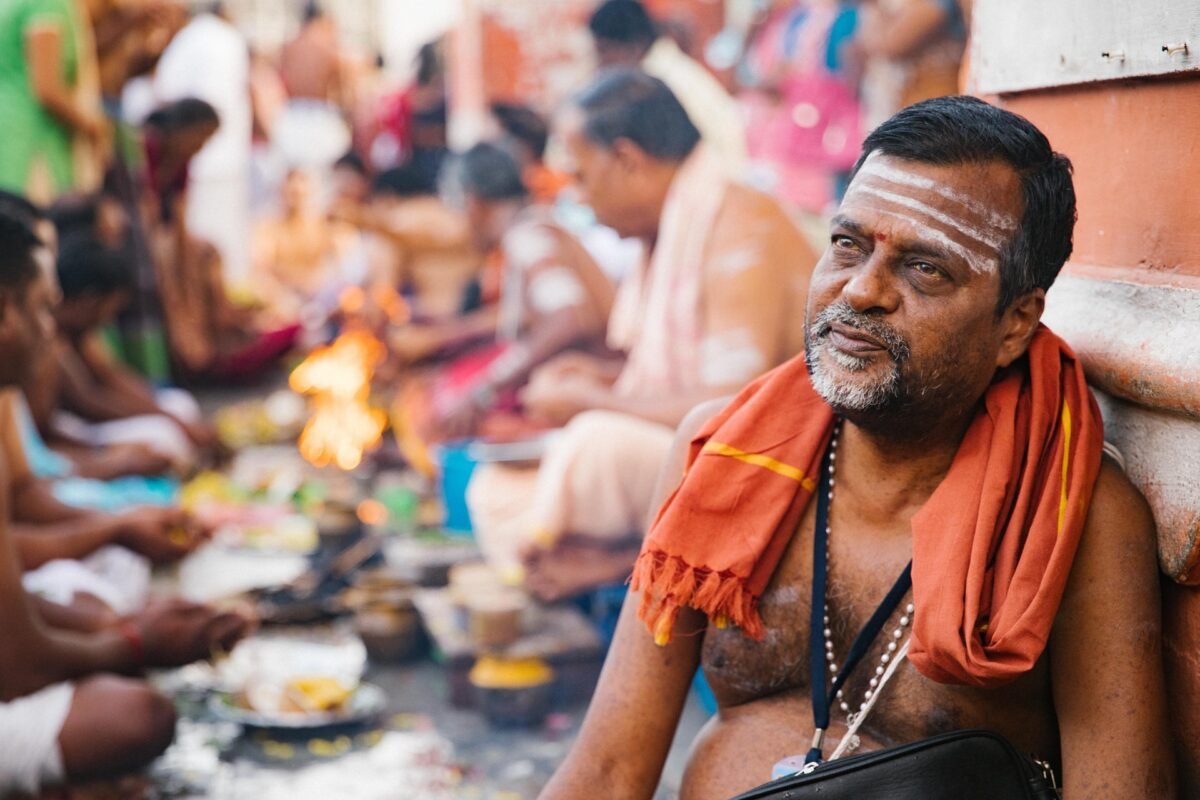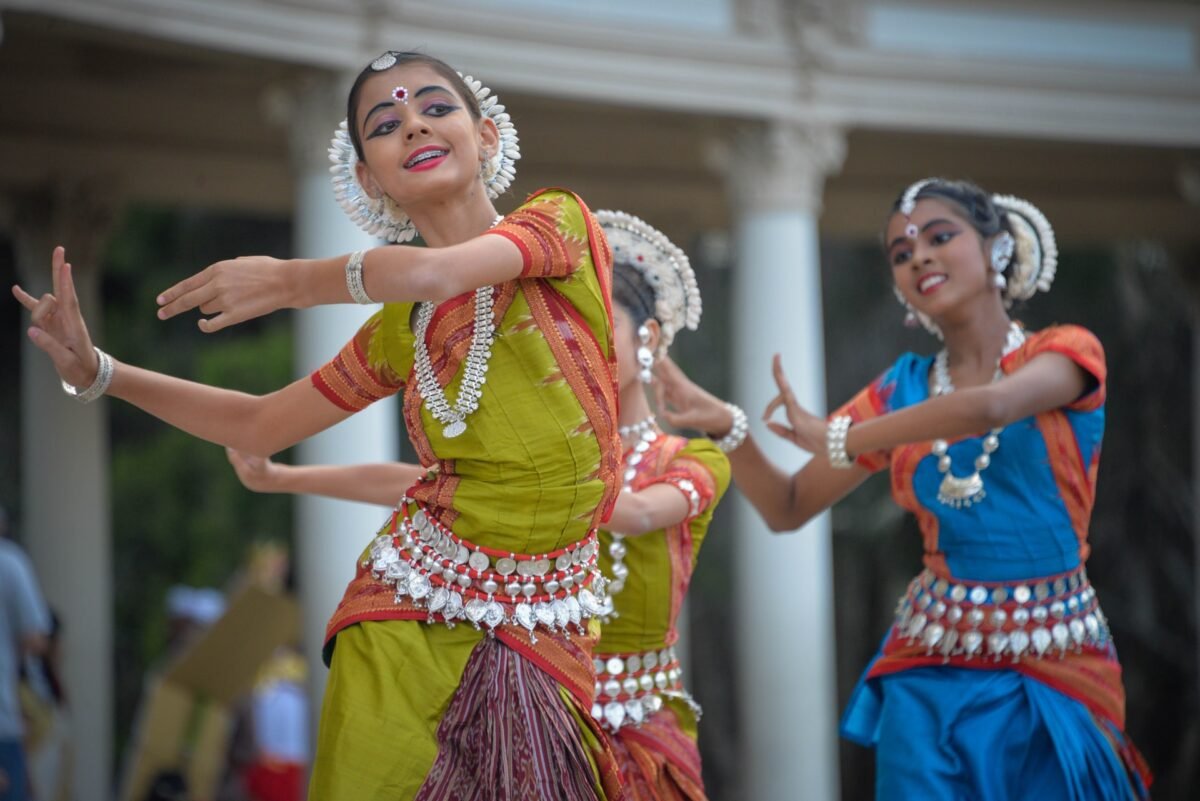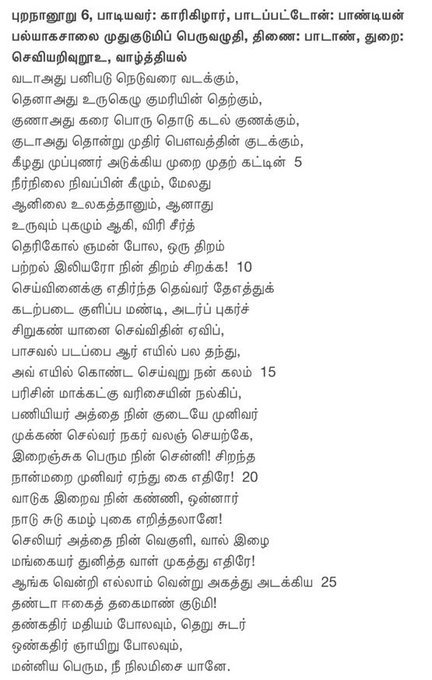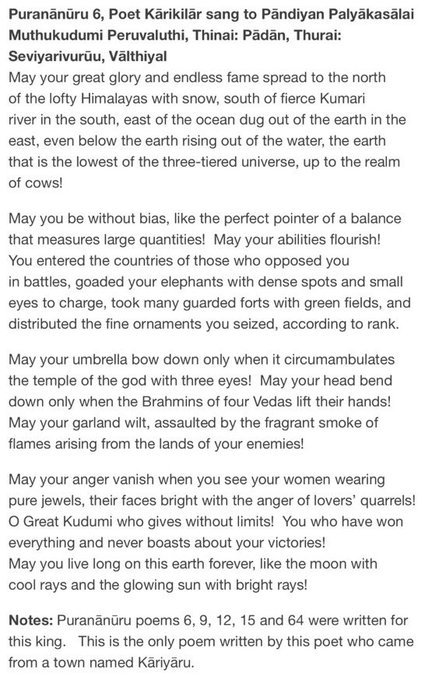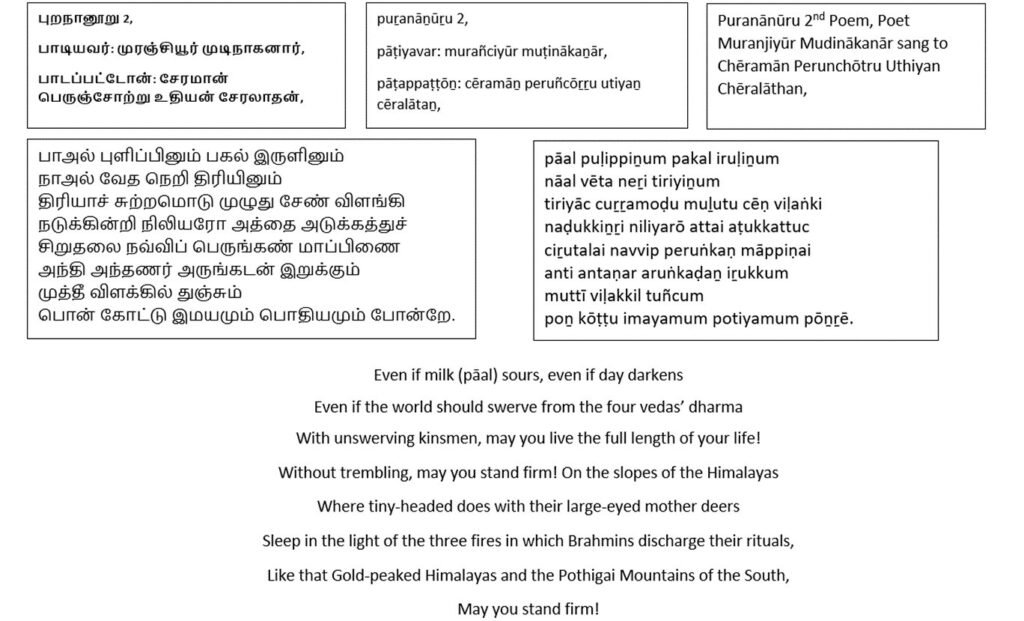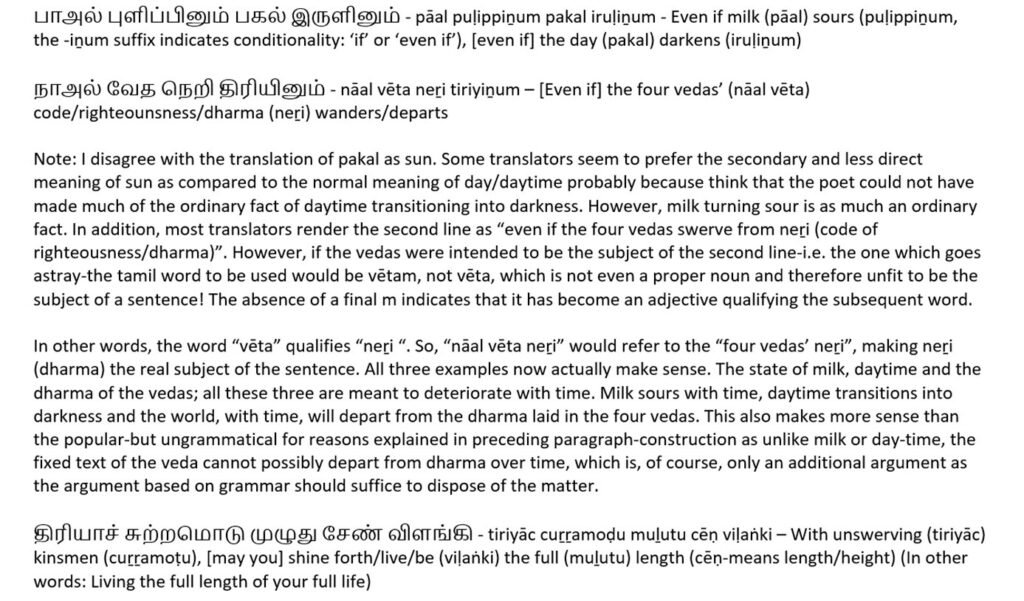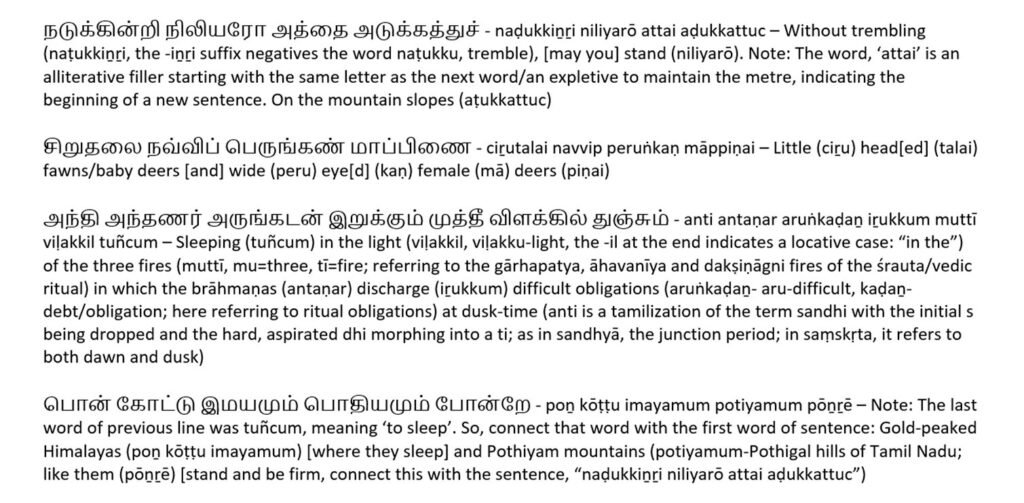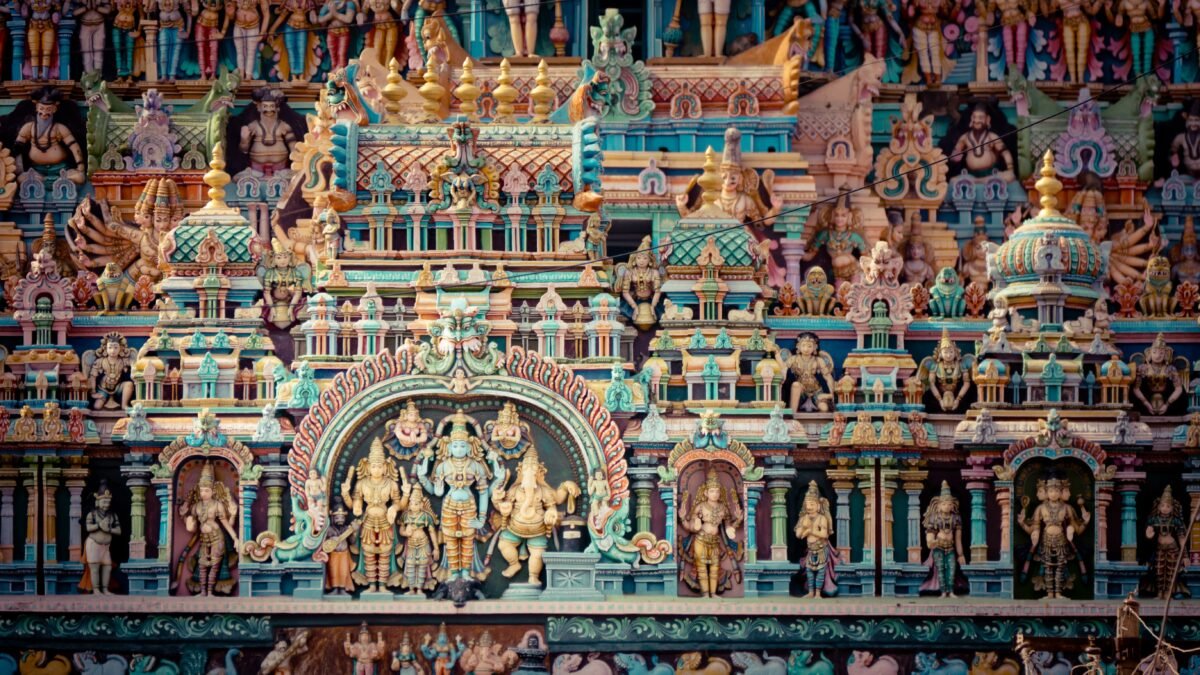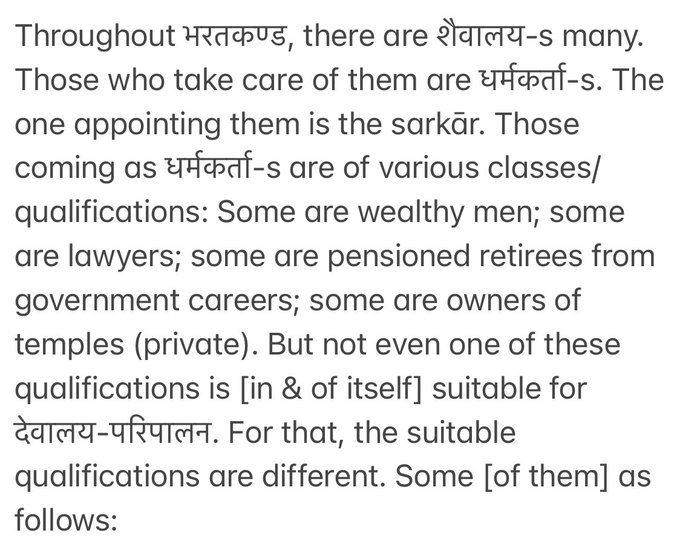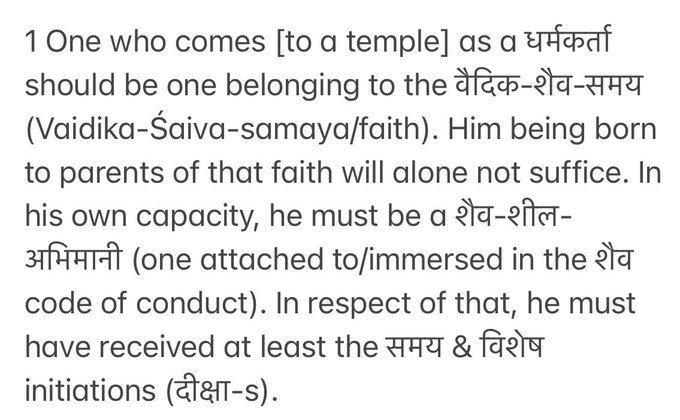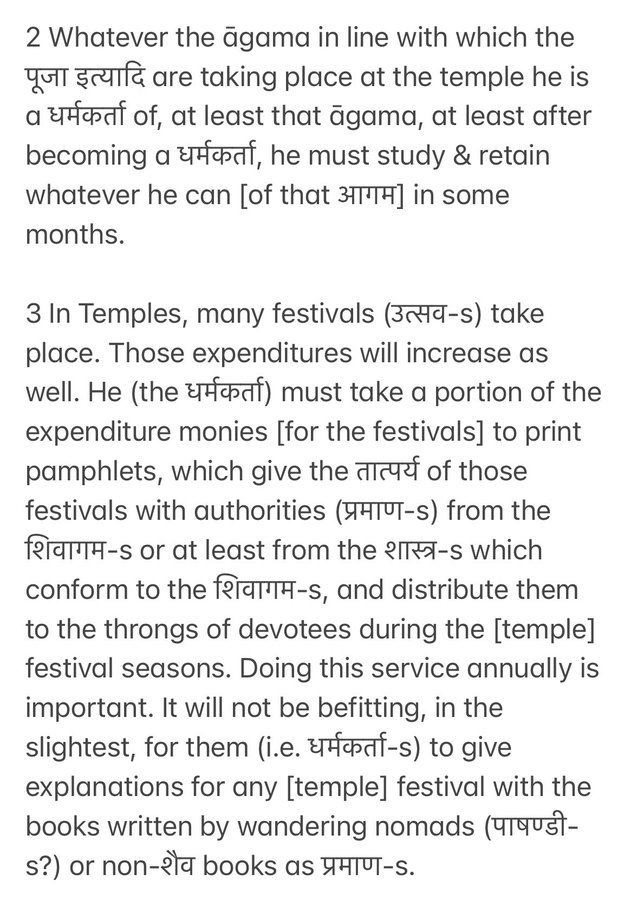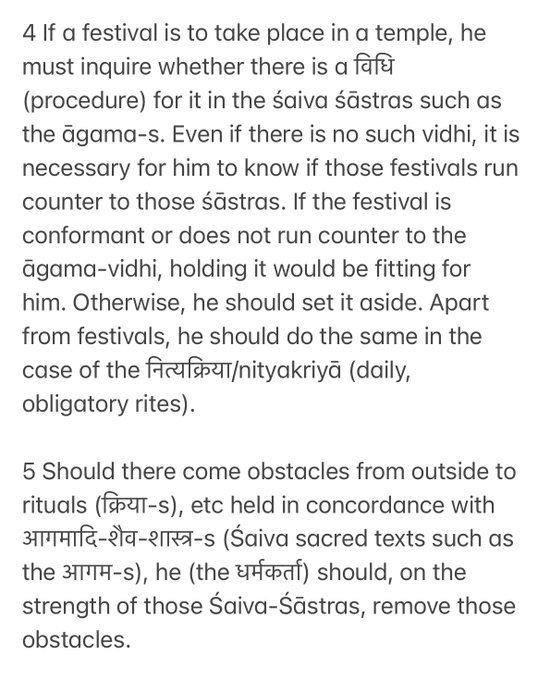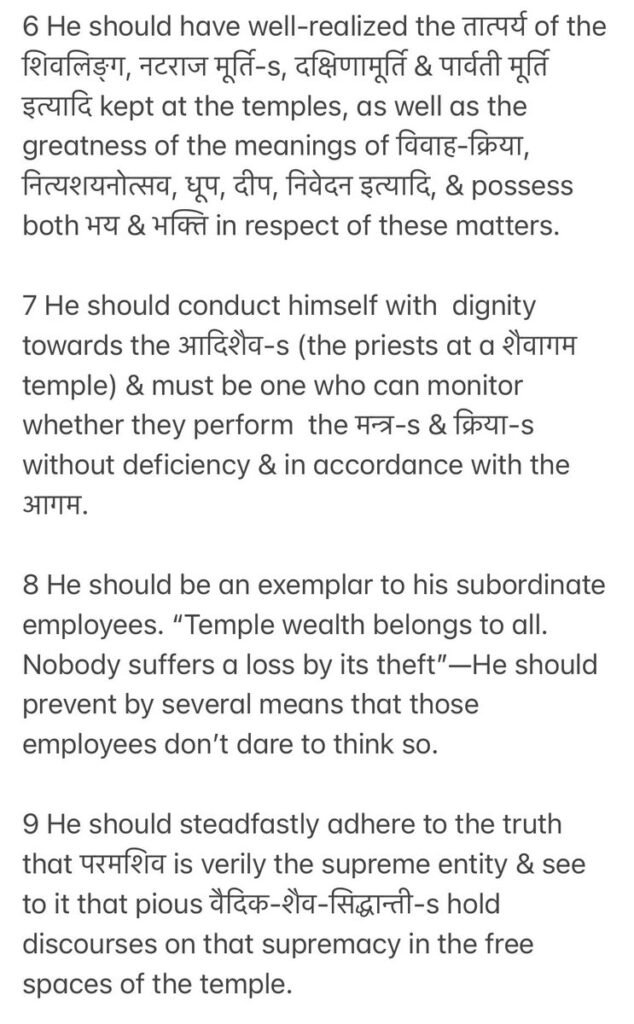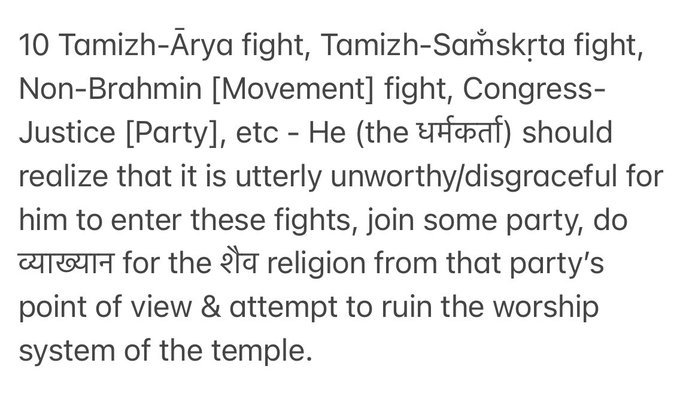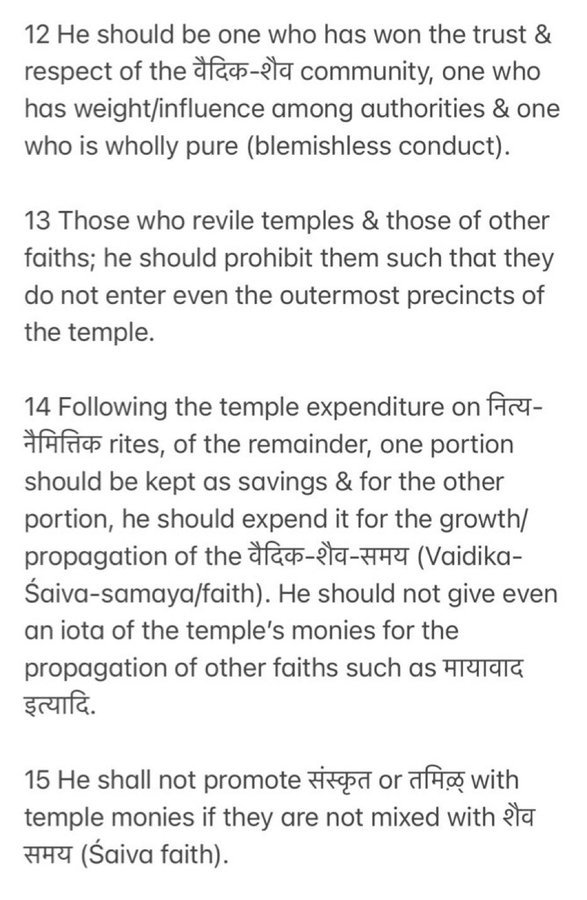- பக்தியை “மரபுவழி”யுடன் வேறுபடுத்துவது தவறானது. பக்தியின் ஆரம்பகால, இன்னும் தங்கத் தரநிலையாகக் கருதப்படுவது, சைவத்தின் 63வது ஆசீர்வதிக்கப்பட்டவர் மற்றும் வைஷ்ணவத்தின் 12வது பெரியவர்; அவர்களின் வாழ்க்கை வைதிகாசாரம் மற்றும் வர்ணாஸ்ரம தர்மத்திற்கு விசுவாசமாக இருந்தது.
- மேலும், பக்தி இயக்கம் வேத காலத்திலிருந்தே நீண்ட வரலாற்று முன்னேற்றங்களின் இயல்பான உச்சக்கட்டமாகும்.
- கடந்த 1500-2000 ஆண்டுகளில் நாம் அறிந்தபடி, பக்தியை விலக்கியதாகக் கூறக்கூடிய ஒரே வகையான “மரபுவழிகள்” நிரீஷ்வர (ஈஷ்வரமற்ற) யோகா வடிவங்கள், வைஷேஷிகா, சம்க்யா & மீமாம்சா. அவர்களுக்கு என்ன ஆனது?
- இன்றைய பள்ளிகளைப் பற்றி அறிவுபூர்வமாக யோசிப்பது மகிழ்ச்சியாக இருக்கிறது, ஆனால் பயனுள்ள கருவிகளாக இருப்பதைத் தவிர, அவை பெரும்பாலான சாதாரண நபர்களுக்கு எந்த ஈர்ப்பையும் கொண்டிருக்கவில்லை. அதனால்தான், அவை விரைவில் அவற்றின் சேஷ்வர சகாக்களால் மாற்றப்பட்டன.
- சேஷ்வர அமைப்புகளில் கூட, எவை உண்மையில் வெகுஜன ஈர்ப்பை உருவாக்கின? முதன்மையாக சைவ மற்றும் வைஷ்ணவ அமைப்புகள், குழுக்களைக் கடந்து, தவிர்க்க முடியாத உணர்ச்சி ஈர்ப்பைக் கொண்டிருந்த ஒரு வளமான கோயில் மற்றும் சமூக சடங்குகளைக் கொண்டிருந்தன. இது அனைவருக்கும் பங்கு கொள்ள ஏதாவது ஒன்றைக் கொடுத்தது.
- உண்மையில், வேதம் மற்றும் வைதீகர்கள் பக்தியால் மட்டுமே செழித்து வளர்கிறார்கள். வைதீக பிராமணரும் இதுவரை வாழ்ந்த மிகப் பெரிய சிவபக்தர்களில் ஒருவருமான ஞானசம்பந்த சுவாமி, அனைத்து ஜாதிகளைச் சேர்ந்த ஆண்களும் பெண்களும் அவருக்குப் பின்னால் அணிவகுத்தனர், அதே நேரத்தில் அவர் நாஸ்திகர்களுக்கு எதிராக வைதீக சடங்குகள் மற்றும் நம்பிக்கைக்கு ஒரு தெளிவான அழைப்பை விடுத்தார்.
- அவர்கள் ஏன் அவரை ஆதரித்தனர்? ஏனென்றால் அவர்கள் மரபுவழி பற்றி அறிவுபூர்வமாக உறுதியாக நம்பினர்? இல்லை, ஆனால் அவர்கள் பரமசிவனின் மீதும், மிக முக்கியமாக ஞானசம்பந்தனின் மீதும் பக்தி கொண்டிருந்ததால்.
- பக்தி, சச்சுத்திர வம்சாவளியைச் சேர்ந்த சைவ துறவியான அப்பரை, வைதிக தியாகங்கள் நிறைந்த ஒரு நகரத்தின் மகிமையைப் பற்றிப் பாட வைத்தது. அப்பரின் காலத்திற்கு 1000 ஆண்டுகளுக்குப் பிறகு, பிராமணரல்லாத பல ஜாதிகள் எண்ணற்ற வேதபாதசாலாக்களை பெரிதும் ஆதரிப்பதை பக்தி உறுதி செய்தது.
அருமுக-நாவலர் (ஒரு மேதை பாரம்பரியவாதி, சச்சுத்திர பின்னணியைச் சேர்ந்த மகாவித்வான் & சைவோத்தமர்) போன்ற ஒருவரை மக்கள் “மரபுவழி” என்று அழைப்பதை இவ்வளவு ஆர்வத்துடன் பாதுகாக்க எது உதவியது?
பகவான் பரமசிவன், முழுமையான இறையாண்மை கொண்டவராக, வேதத்திலும் ஆகமத்திலும் தனது சட்டங்களை வழங்கியுள்ளார் என்பது அவரது உண்மையான நம்பிக்கை.
திரு அருள்மிகு ஆறுமுக நாவலரைப் பற்றி
- भक्ति को “परंपरा” से अलग करना गलत है। सबसे प्राचीन, जिसे आज भी भक्ति का स्वर्ण मानक माना जाता है, शैव धर्म का 63वां धन्य और वैष्णव धर्म का 12वां महान है; उनका जीवन वैदिकों और वर्णाश्रम धर्म के प्रति समर्पित था।
- इसके अलावा, भक्ति आंदोलन वैदिक काल से चली आ रही लंबी ऐतिहासिक घटनाओं की स्वाभाविक परिणति है।
- जैसा कि हम जानते हैं, पिछले 1500-2000 वर्षों में, केवल ऐसी “परंपराएं” हैं जिनके बारे में कहा जा सकता है कि उन्होंने भक्ति को बहिष्कृत कर दिया है, वे हैं योग के निरेश्वर (ईश्वरविहीन) रूप, वैशेषिक, सांख्य और मीमांसा। उनको क्या हुआ?
- आज के स्कूलों के बारे में बौद्धिक रूप से सोचना सुखद है, लेकिन उपयोगी उपकरण होने के अलावा, वे अधिकांश आम लोगों के लिए कोई आकर्षण नहीं रखते। यही कारण है कि जल्द ही उनका स्थान अधिक परिपक्व समकक्षों ने ले लिया।
- यहां तक कि शेषेश्वर प्रणालियों में से भी, किन प्रणालियों ने वास्तव में व्यापक लोकप्रियता हासिल की? मुख्यतः शैव और वैष्णव प्रणालियों में समृद्ध मंदिर और सामाजिक अनुष्ठान थे, जो समूहों से परे थे और जिनमें अनूठा भावनात्मक आकर्षण था। इससे सभी को कुछ न कुछ साझा करने को मिला।
- वस्तुतः वेद और वैदिक धर्म केवल भक्ति पर ही आधारित हैं। ज्ञानसम्बन्ध स्वामी, जो एक वैदिक ब्राह्मण थे और अब तक के सबसे महान शिव भक्तों में से एक थे, उनके पीछे सभी जातियों के पुरुष और महिलाएं एकजुट थे, जबकि उन्होंने नास्तिकों के खिलाफ वैदिक अनुष्ठानों और आस्था का आह्वान किया था।
- उन्होंने उसका समर्थन क्यों किया? क्योंकि वे बौद्धिक रूप से रूढ़िवादिता में आश्वस्त थे? नहीं, बल्कि इसलिए कि उनकी भगवान शिव में तथा सबसे महत्वपूर्ण, ज्ञानसंबंध में भक्ति थी।
- भक्ति ने सच्चूत्र वंश के शैव संत अप्परा को वैदिक बलिदानों से भरे शहर की महिमा का गुणगान करने के लिए प्रेरित किया। अप्पर के समय के 1000 वर्ष बाद, भक्ति ने यह सुनिश्चित किया कि अनेक गैर-ब्राह्मण जातियों ने असंख्य वेदपादशालों का भरपूर समर्थन किया।
अरुमुखा-नवलार (एक प्रतिभाशाली परंपरावादी, महाविद्यावान और सच्चूत्र पृष्ठभूमि से आए सैवोत्तम) जैसे व्यक्ति को किस बात ने इतने उत्साह से उस चीज का बचाव करने में सक्षम बनाया जिसे लोग “परंपरा” कहते हैं?
उनका सच्चा विश्वास यह है कि भगवान शिव ने, पूर्ण प्रभुता संपन्न होने के नाते, वेदों और आगमों में अपने नियम दिये हैं।
उपन्यासकार थिरु अरुलमिगु अरुमुगा के बारे में
- Contrasting Bhakti with “Orthodoxy” is misguided. The earliest strand of, & still the gold standard for, bhakti is that of the Blessed 63 of Śaivam & the great 12 of Vaiṣṇavam; whose lives were loyal to Vaidikācāra & Varṇāśrama-dharma.
- Plus, the Bhakti movement is but a natural culmination of a long series of historical developments from the time of the Veda itself.
- The only type of “orthodoxies” that can be said to have excluded bhakti as we have known in the last 1500-2000 years are the nirīśvara (īśvara-less) forms of yoga, vaiśeṣika, sām̐khyā & mīmām̐sā. What happened to them?
- It’s nice to think about these schools intellectually today but apart from being useful tools, they had no appeal for most normal individuals. Which is why, they were soon replaced by their seśvara counterparts.
- Even among seśvara systems, which ones really developed mass appeal? Primarily the Śaiva & Vaiṣṇava systems with a rich temple & communal ritualism that cut across groups & had an inescapable emotional appeal. It also gave something for everyone to have stakes in.
- In fact, Veda & Vaidikas thrive only because of bhakti. Jñānasambandha Svāmī, a Vaidika Brāhmaṇa & 1 of the greatest Śivabhaktas to have ever lived, had men & women of all jātis rallying behind him while he gave a clarion call for the Vaidika rituals & faith against nāstikas.
- Why did they support him? Because they were intellectually convinced about orthodoxy? No but because they had bhakti for Paramaśiva & more importantly Jñānasambandha.
- Bhakti had Appar, a Śaiva saint of Sacchūdra origin, sing about the glory of a city teeming with vaidika sacrifices. Bhakti ensured, a 1000 years after Appar’s time, that many non-brāhmaṇa jātis greatly sponsored countless vedapāṭhaśālas.
What gave someone like Āṛumukha-Nāvalar (a genius traditionalist, Mahāvidvān & Śaivottama of Sacchūdra background) to so zealously defend what people call “orthodoxy”?
His sincere belief that Bhagavān Paramaśiva, as absolute sovereign, has given his laws in the Veda & Āgama.
On Tiru Arulmigu Arumuka Navalar
- Opposer la Bhakti à l’« orthodoxie » est une erreur. Le courant le plus ancien, et toujours la référence absolue, de la bhakti est celui des 63 Bienheureux de Śaivam et des 12 Grands de Vaiṣṇavam, dont la vie fut fidèle au Vaidikācāra et au Varṇāśrama-dharma.
- De plus, le mouvement Bhakti n’est que l’aboutissement naturel d’une longue série de développements historiques depuis l’époque même des Védas.
- Les seules « orthodoxies » dont on peut dire qu’elles ont exclu la bhakti telle que nous la connaissons depuis 1 500 à 2 000 ans sont les formes de yoga nirīśvara (sans īśvara), le vaiśeṣika, le sām̐khyā et le mīmām̐sā. Que sont-elles devenues ?
- Il est agréable de réfléchir à ces écoles intellectuellement aujourd’hui, mais outre leur utilité, elles n’avaient aucun attrait pour la plupart des individus ordinaires. C’est pourquoi elles furent rapidement remplacées par leurs homologues seśvara.
- Même parmi les systèmes seśvara, lesquels ont véritablement suscité un attrait populaire ? Principalement les systèmes Śaiva et Vaiṣṇava, avec leur riche temple et leur rituel communautaire transversal et leur attrait émotionnel inéluctable. Ils offraient également un intérêt à chacun.
- En réalité, les Védas et les Vaidikas ne prospèrent que grâce à la bhakti. Jñānasambandha Svāmī, un Vaidika Brāhmaṇa et l’un des plus grands Śivabhaktas de tous les temps, a été soutenu par des hommes et des femmes de tous les jātis, tandis qu’il lançait un appel clair aux rituels et à la foi Vaidika contre les nāstikas.
- Pourquoi l’ont-ils soutenu ? Parce qu’ils étaient intellectuellement convaincus de l’orthodoxie ? Non, mais parce qu’ils avaient une dévotion pour Paramaśiva et, plus important encore, pour Jñānasambandha.
- La dévotion fit chanter Appar, un saint Śaiva d’origine sacchūdra, la gloire d’une cité regorgeant de sacrifices vaidika. Mille ans après l’époque d’Appar, la dévotion permit à de nombreux jātis non-brāhmaṇa de financer d’innombrables vedapāṭhaśālas.
Qu’est-ce qui a poussé quelqu’un comme Āṛumukha-Nāvalar (un traditionaliste de génie, Mahāvidvān et Śaivottama d’origine sacchūdra) à défendre avec autant de zèle ce que l’on appelle « l’orthodoxie » ?
Sa conviction sincère que Bhagavān Paramaśiva, en tant que souverain absolu, a donné ses lois dans les Veda et Agama.
Sur Tiru Arulmigu Arumuka Navalar
- Oponer Bhakti a la “ortodoxia” es un error. La corriente más antigua, y todavía la referencia absoluta, del bhakti es la de los 63 Benditos del Śaivam y los 12 Grandes del Vaiṣṇavam, cuya vida fue fiel al Vaidikācāra y al Varṇāśrama-dharma.
- Además, el movimiento Bhakti es sólo el resultado natural de una larga serie de desarrollos históricos desde la época misma de los Vedas.
- Las únicas “ortodoxias” que pueden decirse que han excluido el bhakti tal como lo conocemos durante los últimos 1.500 a 2.000 años son las formas de yoga nirīśvara (sin īśvara), vaiśeṣika, sām̐khyā y mīmām̐sā. ¿Qué pasó con ellos?
- Es agradable reflexionar intelectualmente sobre estas escuelas hoy en día, pero aparte de su utilidad, no tenían ningún atractivo para la mayoría de los individuos comunes. Es por esto que fueron rápidamente reemplazados por sus contrapartes seśvara.
- Incluso entre los sistemas seśvara, ¿cuáles han ganado verdaderamente atractivo popular? Principalmente los sistemas Śaiva y Vaiṣṇava, con sus ricos templos y rituales intercomunitarios y su ineludible atractivo emocional. También ofrecieron un interés para todos.
- En realidad, los Vedas y los Vaidikas florecen sólo a través del bhakti. Jñānasambandha Svāmī, un Brāhmaṇa Vaidika y uno de los más grandes Śivabhaktas de todos los tiempos, fue apoyado por hombres y mujeres de todos los jātis, mientras hacía un claro llamado a los rituales Vaidika y a la fe contra los nāstikas.
- ¿Por qué lo apoyaron? ¿Porque estaban intelectualmente convencidos de la ortodoxia? No, sino porque tenían devoción por Paramaśiva y, más importante aún, por Jñānasambandha.
- La devoción hizo que Appar, un santo Śaiva de origen sacchūdra, cantara la gloria de una ciudad rebosante de sacrificios vaidika. Mil años después de la época de Appar, la devoción permitió a muchos jātis no brāhmaṇa financiar innumerables vedapāṭhaśālas.
¿Qué impulsó a alguien como Āṛumukha-Nāvalar (un genio tradicionalista, Mahāvidvān y Śaivottama de origen sacchūdra) a defender con tanto celo lo que se llama “ortodoxia”?
Su sincera creencia en que Bhagavān Paramaśiva, como gobernante absoluto, dio sus leyes en los Vedas y Agamas.
Sobre Tiru Arulmigu Arumuka Navalar
